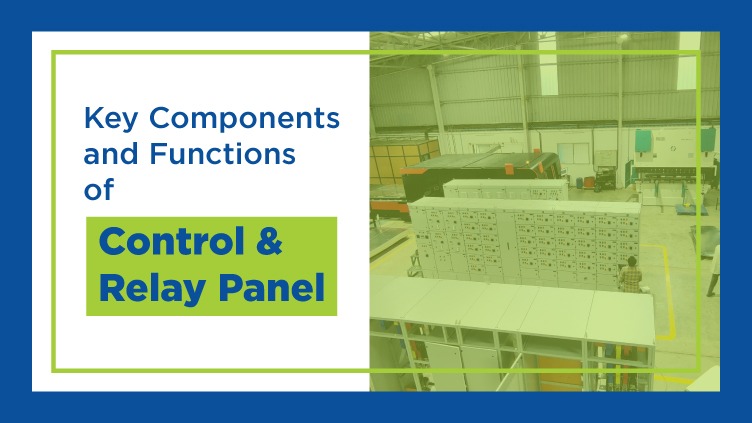Unveiling the Key Components and Functions of a Control & Relay Panel
The control and relay panel is a crucial element in electrical systems, coordinating the complex dance between protection and power delivery. These panels are essential for maintaining smooth functioning and protecting against possible hazards in any setting—agricultural, industrial, or residential. This in-depth overview explores the vital parts and operations of a control and relay panel, illuminating the importance of these panels in a variety of industries.
Understanding the Control & Relay Panel
Fundamentally, a control and relay panel is the hub of an electrical system, in charge of keeping an eye on, managing, and safeguarding the flow of power. It is sometimes referred to as an electrical panel or a relay control panel, and it is made up of several connected components that work together to control power.
Important Elements of a Control and Relay Panel
1.Relays: The main switchgear in the control and relay panel, relays isolate malfunctioning circuits and guard against electrical overloads. These electromechanical devices control the flow of electricity by opening or closing electrical connections in response to certain situations.
2.Circuit breakers: Acting as the first line of defense against electrical malfunctions, circuit breakers cut the circuit when anomalous circumstances like overloads or short circuits arise. They are available in several varieties, each designed to handle particular kinds of defects, such as thermal, magnetic, and hybrid.
3.Protection Relays: These devices are essential for preventing possible dangers to workers and electrical equipment. These clever gadgets constantly check important metrics like voltage, current, and frequency, initiating safeguards.
4.Control Devices: These devices, which include push buttons, switches, and indicators, enable manual control and observation of the electrical system. They enable operators to carry out necessary functions such notifying the status of operations and starting or halting equipment.
5.Communication connections: Providing smooth integration with Supervisory Control and Data Acquisition (SCADA) systems, communication connections in contemporary control and relay panels allow for remote monitoring and control functions. This improves the overall efficiency and dependability of the system by enabling real-time data collection, analysis, and decision-making.
Functions of a Control & Relay Panel
1.Overcurrent Protection: A control and relay panel’s main job is to protect against overcurrent by identifying and isolating electrical faults such overloads and short circuits. This keeps personnel safe and prevents equipment damage.
2.Fault Detection and Localization: By employing sophisticated protection relays, control and relay panels are able to precisely identify and pinpoint defects in the electrical system, reducing downtime and enabling timely remedial action.
3.Load management: Control and relay panels are essential for efficiently controlling electrical loads, guaranteeing the best possible use of the power resources at hand, and averting grid instability.
4.Remote Monitoring and Control: Modern control and relay panels come equipped with built-in communication interfaces that allow for remote monitoring and control. This allows operators to monitor system performance and take remedial action from a central location.
FAQs
1. How is a control and relay panel different from a traditional electrical panel?
With the use of sophisticated relay protection schemes and control logic, a control and relay panel may carry out intricate tasks including load management, fault isolation, and defect detection. Additionally, it has communication interfaces that allow for a smooth connection with SCADA systems, increasing the flexibility and overall intelligence of the system.
2. What role do control and relay panels play in energy conservation?
Control and relay panels contribute to reduced energy waste and increased system efficiency by streamlining load management and putting sophisticated protective measures in place. Furthermore, operators can see inefficiencies and take proactive corrective action thanks to remote monitoring capabilities.
3. Is it possible to modify control and relay panels to satisfy particular application needs?
Yes, trustworthy electrical panel manufacturers provide adaptable solutions designed to satisfy the particular requirements of different sectors and uses. These electrical panel manufacturers work directly with clients to develop custom control and relay panels that meet their unique needs and operational goals, from design and engineering through manufacturing and testing.
4. What upkeep procedures are suggested to guarantee the control and relay panels operate dependably?
To guarantee the dependable functioning of control and relay panels, routine maintenance is necessary. This covers the routine examination, testing, and calibration of circuit breakers, relays, and other important parts. To fix any vulnerabilities and guarantee system security, firmware updates and software patches should also be installed right away.
To sum up, control and relay panels are essential components of contemporary electrical systems that combine strong protection strategies with clever control logic to guarantee effective and secure operation. These panels are essential for safeguarding against electrical risks, improving energy efficiency, and optimizing power distribution in home, industrial, and agricultural contexts. Electrical Panel Manufacturers may maximize the usefulness and reliability of control and relay panels in a variety of applications by making educated decisions regarding their design, deployment, and maintenance by having a thorough understanding of the essential parts and functions of these panels.

